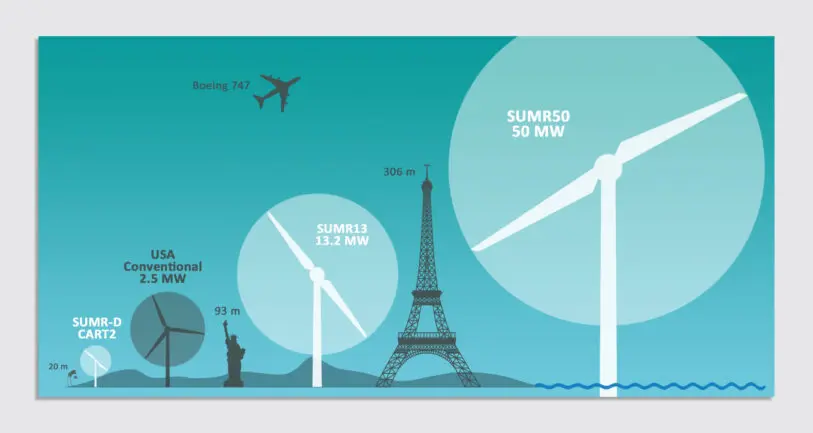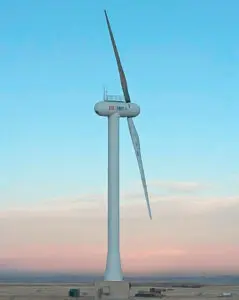Wind turbines keep getting bigger: One design is three times taller than the Statue of Liberty, with blades that are each as long as a football field. The massive size makes wind energy cheaper to produce. But it also makes it harder to design equipment that can stand up to high winds. Instead of making stronger blades, one team of engineers created blades that can easily bend in a hurricane.

“The idea was to look at nature—instead of trying to be stiff and strong, like an oak tree, to be a bit more soft and flexible and lightweight, like a palm tree,” says Eric Loth, an engineering professor at the University of Virginia who is collaborating with researchers from several other universities on the work.
Standard wind turbines face into the wind. In the worst-case scenario, strong winds could bend the blades back so much that they hit the tower holding them up, knocking everything down. That rarely happens, since wind turbines are engineered with thick, stiff blades to survive storms. But “it costs money and it costs essentially energy loss if you have to make them bigger and stronger and stiffer,” Loth says.

The new design, called the Segmented Ultralight Morphing Rotor, or SUMR, faces downwind. That means it’s okay if the blades bend, since they won’t crash into the tower. “We let them align with the wind loads, and it’s more of a natural, bio-inspired design, so to speak,” Loth explains. The blades can be lighter, which means that the whole system can also be much bigger. (New advances also make it possible to use two blades instead of three, further reducing the weight.)
The biggest turbines today can generate up to 14 megawatts of electricity at a given time (or as much as 74 gigawatts of gross energy per year), enough to power thousands of homes. The new approach could make it possible for a single turbine to generate an astonishing 50 megawatts.
The team tested a prototype in a mountain range near Boulder, Colorado, over the past two years. “It’s a small version, but the small version is still more than 10 stories tall,” Loth says. Scaled up to 25 megawatts, it would be taller than the Eiffel Tower. At 50 megawatts, the tower would be 984 feet tall, with blades stretching another 820 feet.
If the turbines are constructed, they’ll likely be installed far offshore—some 25 miles or more into the ocean—so people living near the coast can’t see or hear them, and out of the path of most migratory birds, which tend to follow the coastline.
In the tests, the design worked well, surviving a 110-mile-an-hour wind gust and a bomb cyclone. The researchers expect to take another year to finish processing the data and writing reports. By then they’re hoping that wind turbine manufacturers begin to adopt the idea.
“Wind turbines take a long time to develop,” Loth says. “A company like GE or Siemens will spend maybe billions of dollars to develop a next generation of turbines.” Turbines that those companies are rolling out now have been in development for several years.
The SUMR design could be an important step in helping renewable energy grow, since the 50-megawatt turbine has the potential to cut the cost of wind power by as much as 20%.
“Eventually, wind energy is going to displace carbon-based fuels,” Loth says. “It has to be cheaper. It’s nice to have policies and politics that will support renewable energy, but it’s probably more important to make sure that the wind energy will come at a lower price than fracking and natural gas. If you can be less expensive, you’re helping to win the decarbonization battle.”
Recognize your brand’s excellence by applying to this year’s Brands That Matter Awards before the early-rate deadline, May 3.
